Average Ehrhart coefficients & symplectic Hecke eigenbases
Joshua Maglione
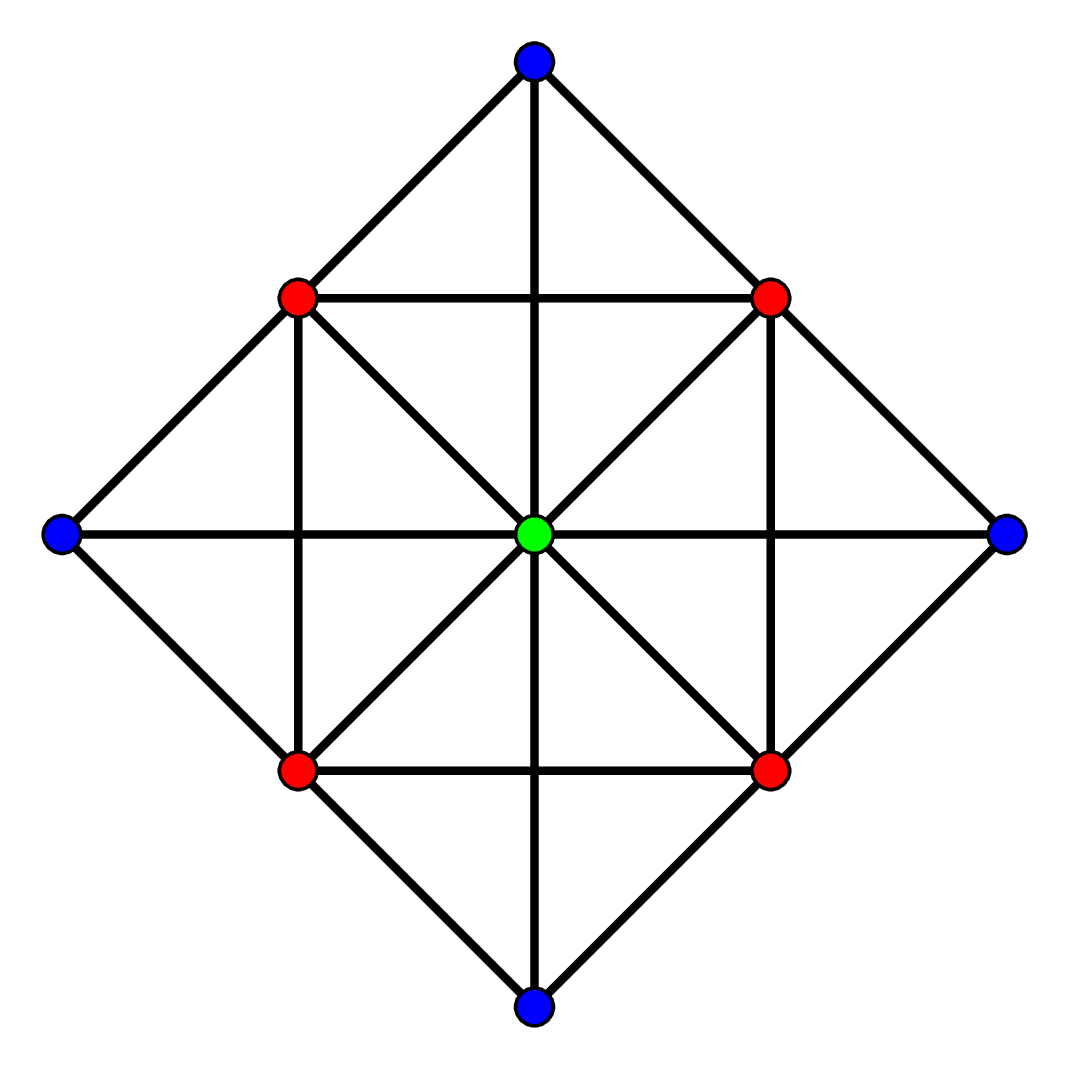
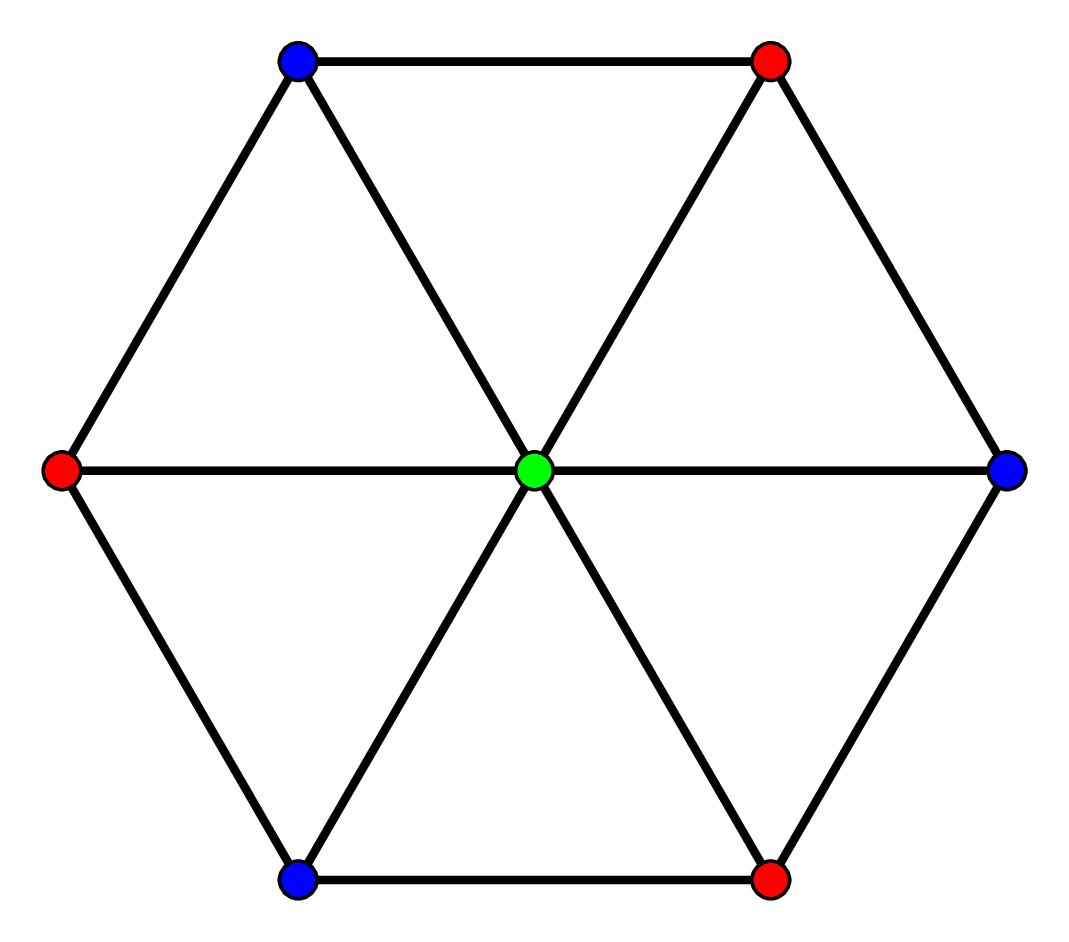
How to Navigate:
Spacebar: Forward
Shift + Spacebar: Backward
Escape: Jump around
Arrow keys: Move around
Polytopes
A polytope is the convex hull of finitely many points in \(\mathbf{R}^n\).
A lattice polytope is the convex hull of finitely many points in \(\mathbf{Z}^n\subset \mathbf{R}^n\).
For us: "polytope" means "lattice polytope"
Discrete Volumes
For a polytope \(P\) and \(k\in \mathbf{Z}_{\geqslant 0}\) the \(k\)th dilate is \(kP = \{k\cdot p ~|~ p \in P\}\)
The discrete volume of a polytope \(P\) is \(\# (P\cap \mathbf{Z}^n)\).
Corollary. The degree is \(\leqslant n\). The coefficient of \(t^n\) is \(\mathrm{vol}(P)\).
Ehrhart
polynomial
Ehrhart polynomials


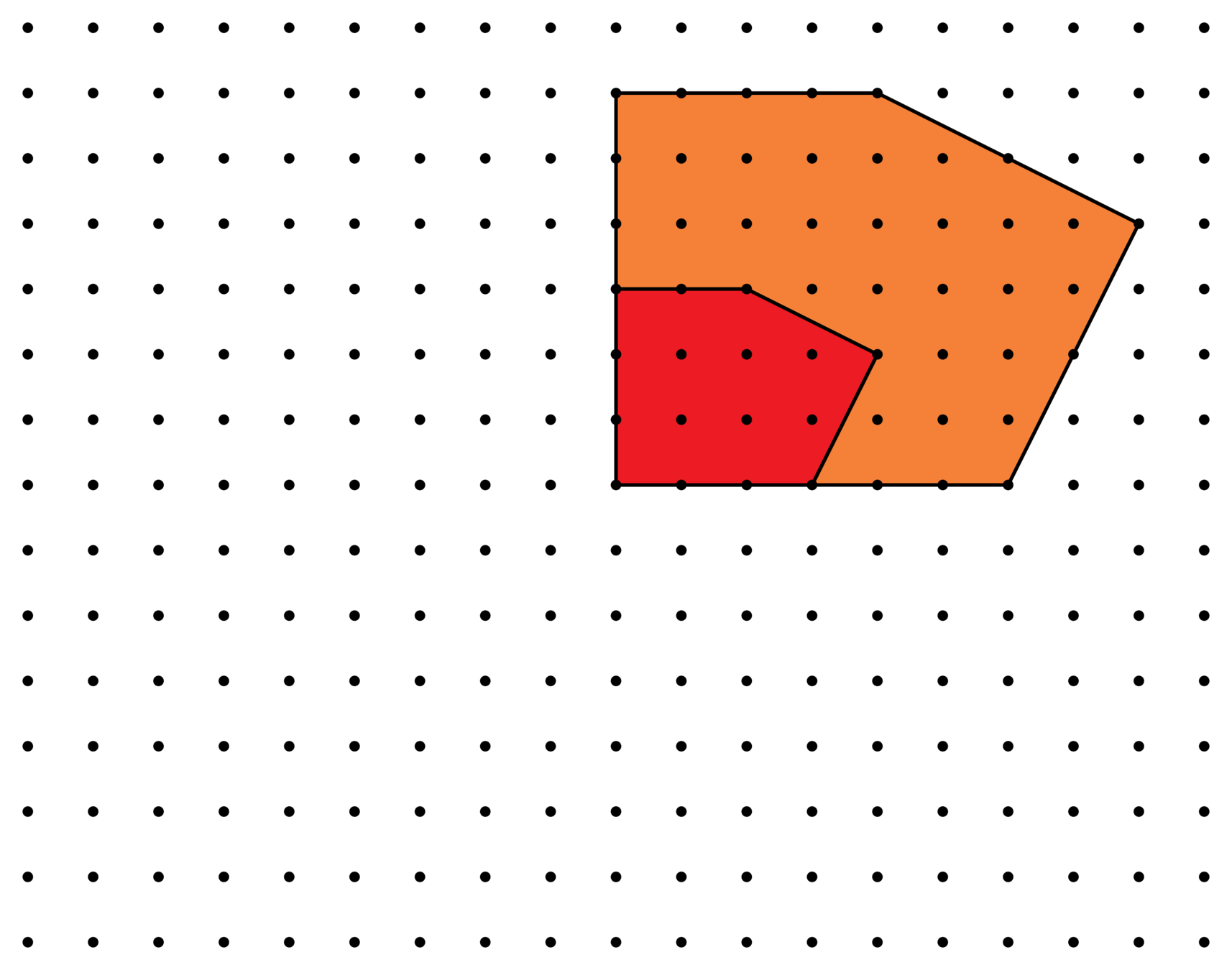

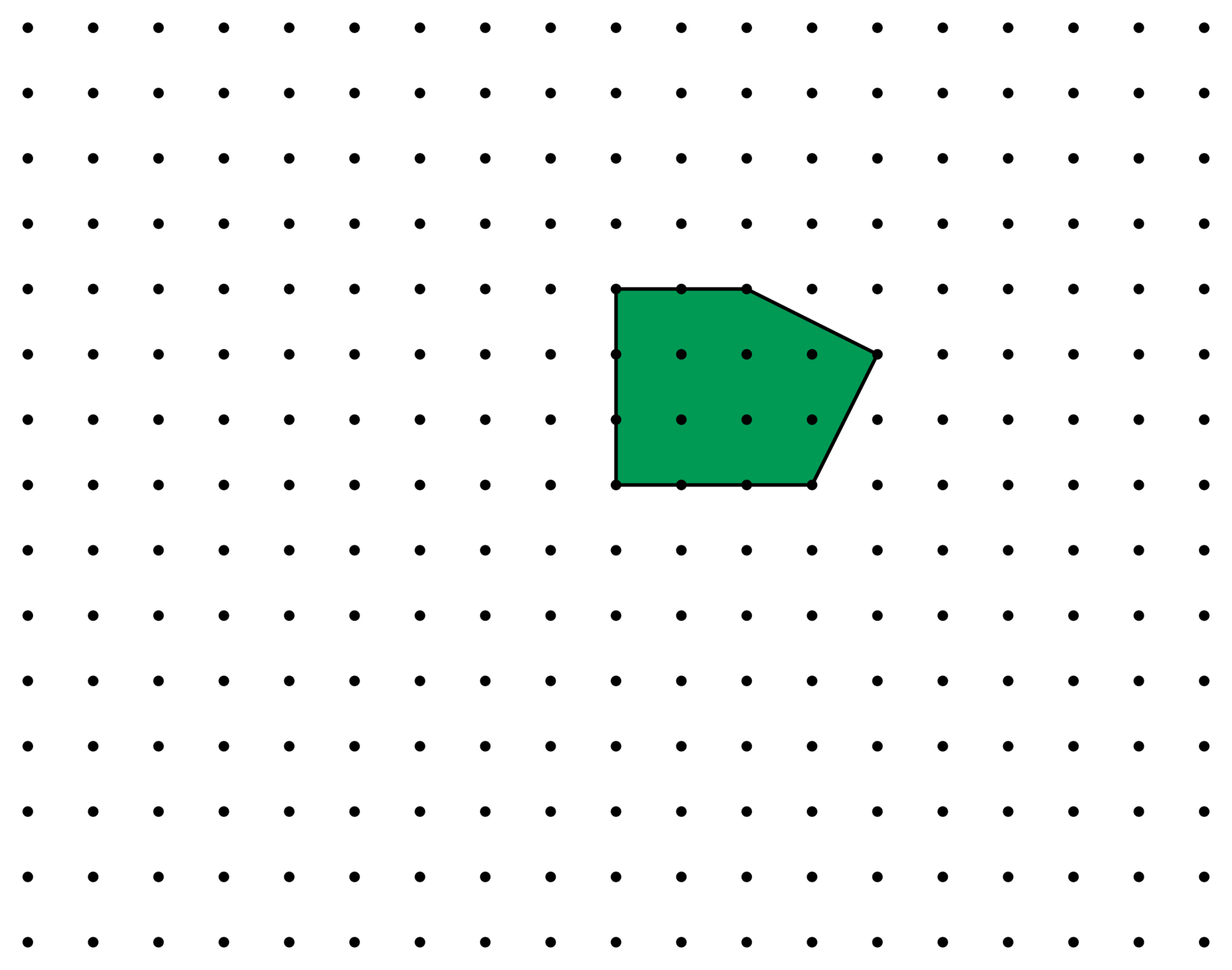
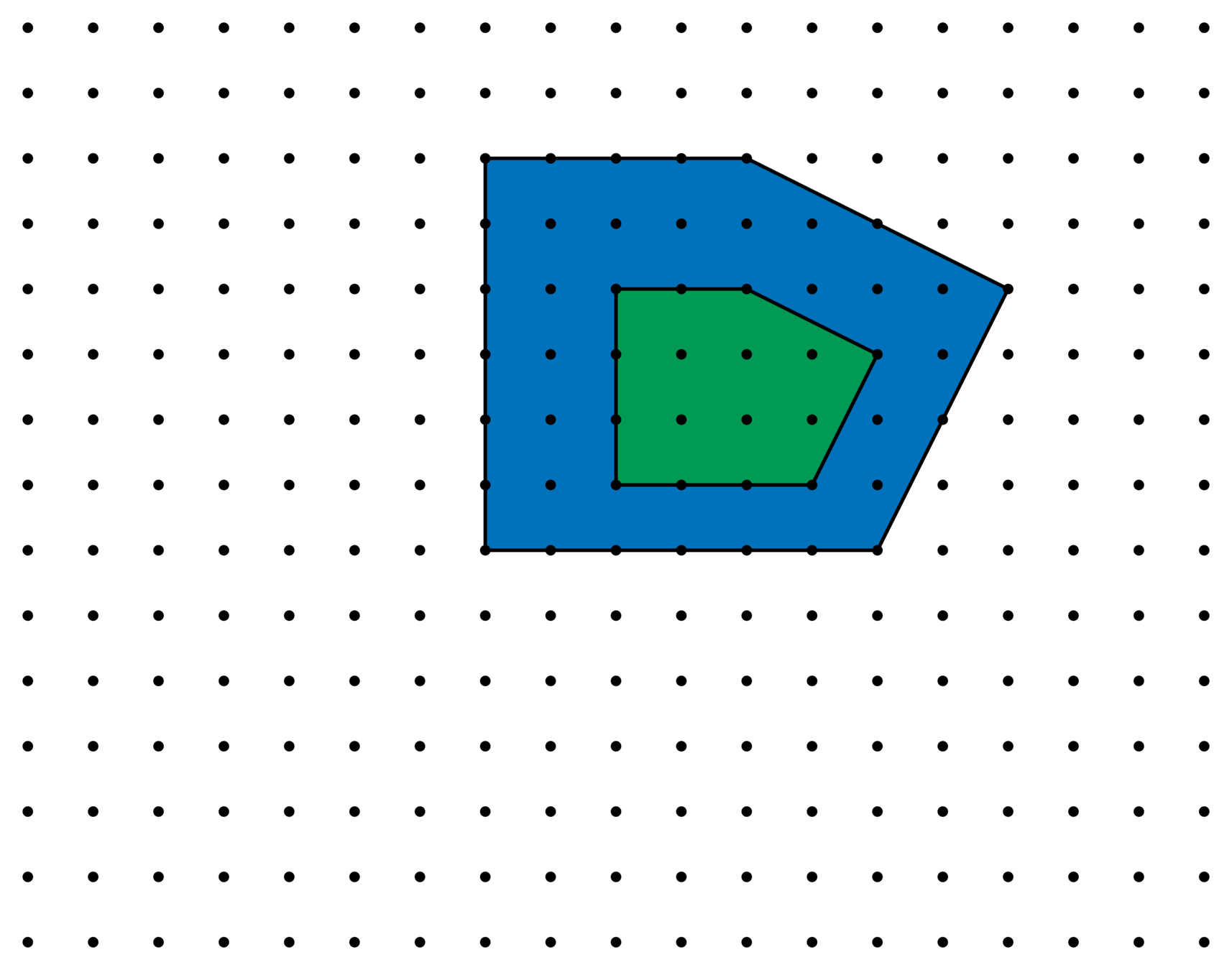
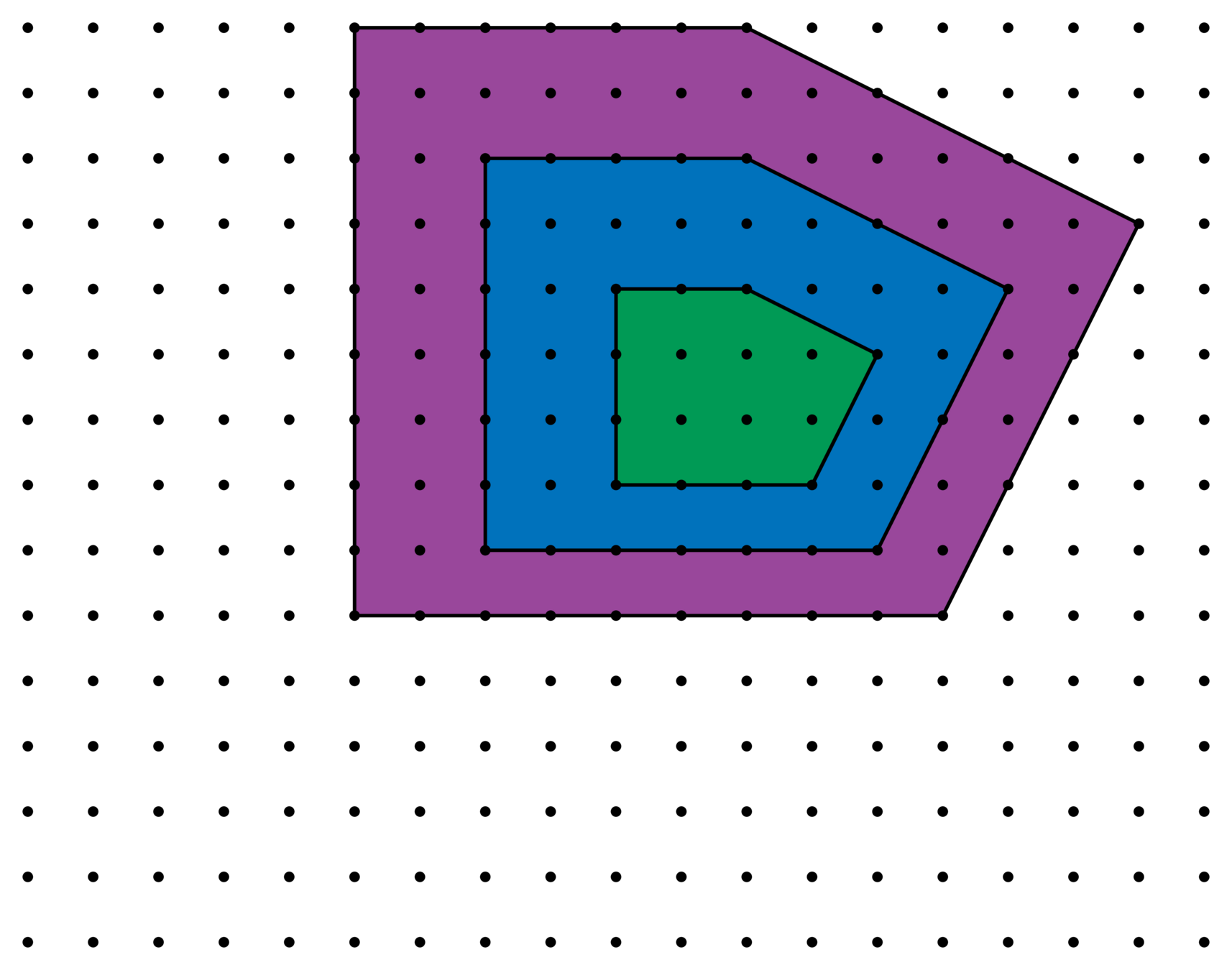

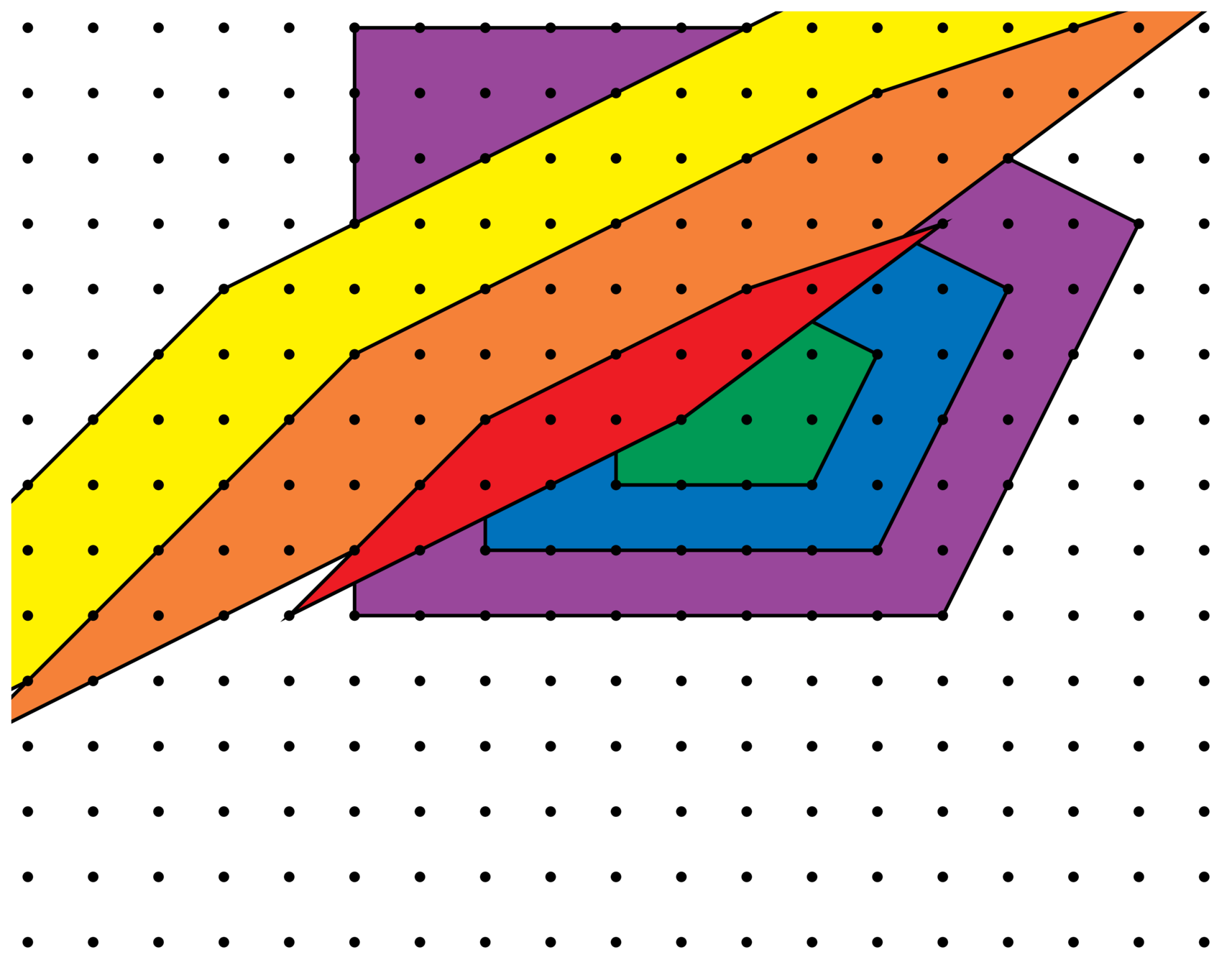
\(E(t) = 10t^2 + 5t + 1\)
\(E_P^{\Lambda}(t)\) : Ehrhart polynomial
\(t \mapsto \#(tP\cap \Lambda)\)
lattice: \(\Lambda = \mathbf{Z}^2\)
\(E(1)=16\)
\(E(3)=106\)
\(E(2)=51\)
Other coefficients with meaning?
Let \(E_P^{\Lambda}(t) = c_0 + c_1t + \cdots + c_nt^n\). For \(\ell\in \{0,\dots, n\}=[n]_0\), define
Thus, \(\mathscr{E}_{n,\ell}^{\Lambda}\) is the function on polytopes in \(\mathbf{R}^n\) extracting the \(\ell\)th coefficient of its Ehrhart polynomial.
\(\mathbf{Z}^n\subseteq \Lambda\subset \mathbf{Q}^n\)
More
complicated
Example: \((a,b,c)\)-simplex

\((a,b,c)\) co-prime
Here, \(S\) is a Dedekind sum. With
Brion & Vergne (1997) proved that \(\mathscr{E}_{n,\ell}\) are given by certain differential Todd operators acting on \(\mathrm{vol}\) for simple polytopes.
Unimodular invariant valuations
An \(\mathbf{R}\)-valued function \(\varphi\) on polytopes is a valuation if
whenever \(P, Q, P\cap Q, P\cup Q\) are polytopes and \(\varphi(\varnothing)=0\).
A valuation \(\varphi\) is unimodular invariant if for all \(\alpha\in \mathrm{Aut}(\Lambda)\!\leqslant\! \mathrm{Aff}_{n}(\mathbf{R})\)
Valuations capture
"geometric" measurements
Examples:
- Volume
- Surface area
- Mean width
- Euler characteristic
is a basis for the space of unimodular invariant valuations.
Theorem (Betke & Kneser (1985)). The set
The Ehrhart coefficients encode all geometric measurements.
Betke & Kneser is a discrete analogue of Hadwiger's Theorem (1957).
The analogy, unfortunately, does not carry over to the properties of the valuations \(\mathscr{E}_{n,\ell}\).
The \(n+1\) intrinsic volumes are a basis for the space of certain valuations on compact convex bodies in \(\mathbf{R}^n\).
We can form the Ehrhart series:
Ehrhart series & \(h^*\)-polynomial
The \(h_i^*\) are unimodular invariant but not valuations.
Stanley (1980) proved non-negativity:
and, in (1993), monotonicity:
Is there anything special about Ehrhart coefficients?
Breuer (2012) defined the \(f^*\)-polynomial writing Ehrhart polynomial in a different polynomial basis:
Jochemko & Sanyal (2018) proved that the \(f^*_i\) form the essentially unique basis for \(\mathrm{UIV}_n\) which are non-negative and monotone.
unimodular invariant
valuations
Unique* Hecke eigenfunctions
Theorem (Alfes, M, & Voll (2025)). The valuations
form a symplectic Hecke eigenbasis for the space of \(\mathrm{UIV}_{2n}\).
Theorem (Gunnells & Rodriguez Villegas (2007)). The valuations
form a Hecke eigenbasis for the space of \(\mathrm{UIV}_n\).
Up to independent scaling, this is the unique basis of such valuations.
Lattice perspective



\(\mathbf{Z}^n\)
\(\frac{1}{2}\mathbf{Z}^n\)
\(\frac{1}{3}\mathbf{Z}^n\)
Consider how \(\mathscr{E}_{n,\ell}^{\Lambda}\) changes as we refine \(\mathbf{Z}^n\subseteq \Lambda\subset \mathbf{Q}^n\).
Represent a lattice \(\Lambda\) by a matrix, whose rows generate \(\Lambda\).
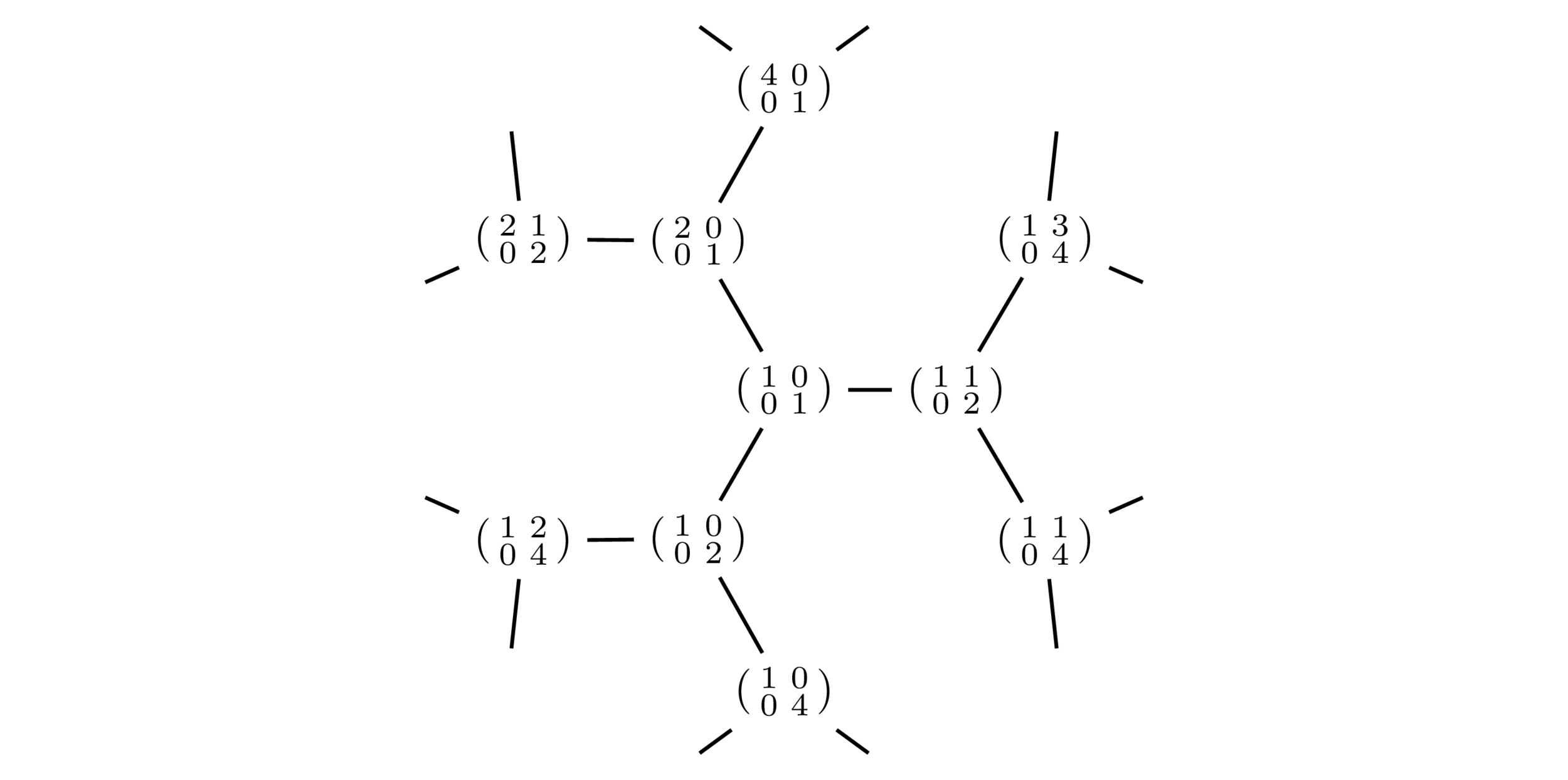
Lattices \(\Lambda\supseteq\mathbf{Z}^2\)



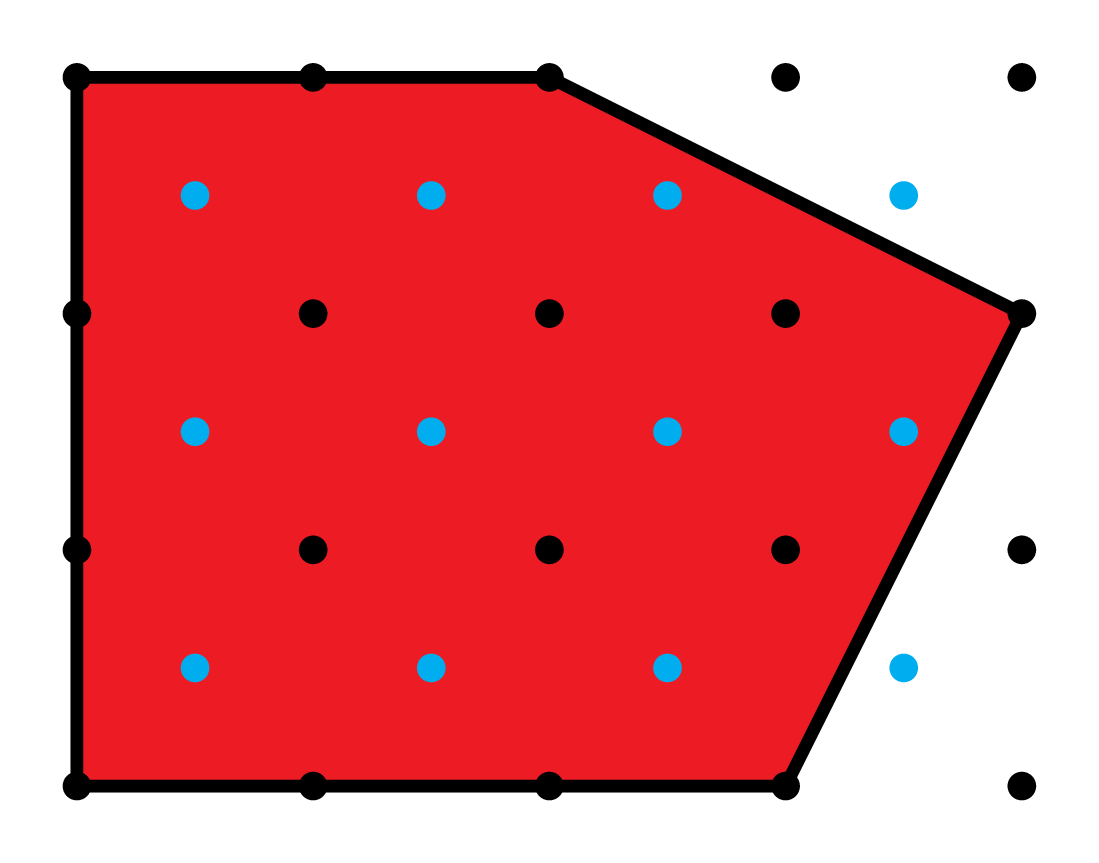


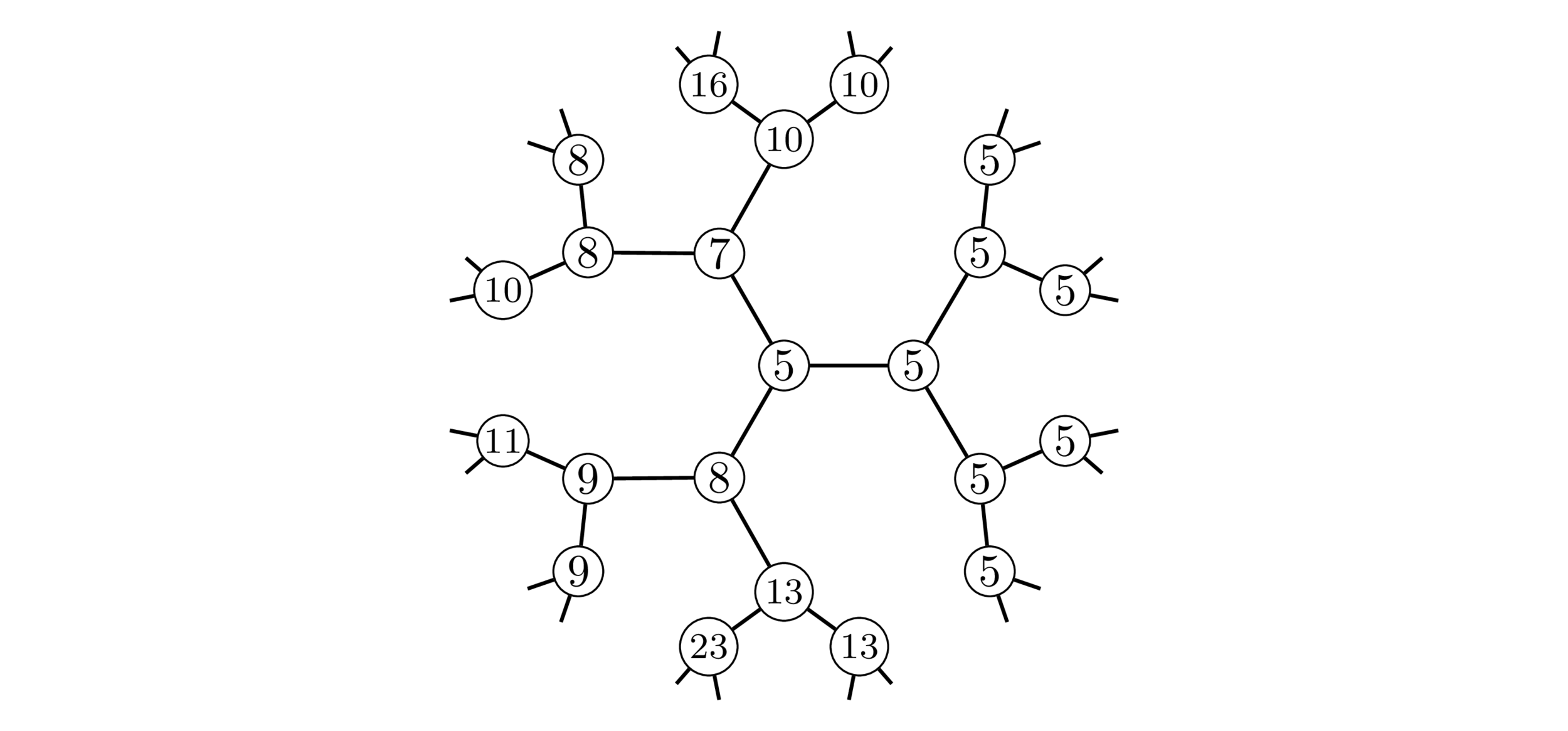

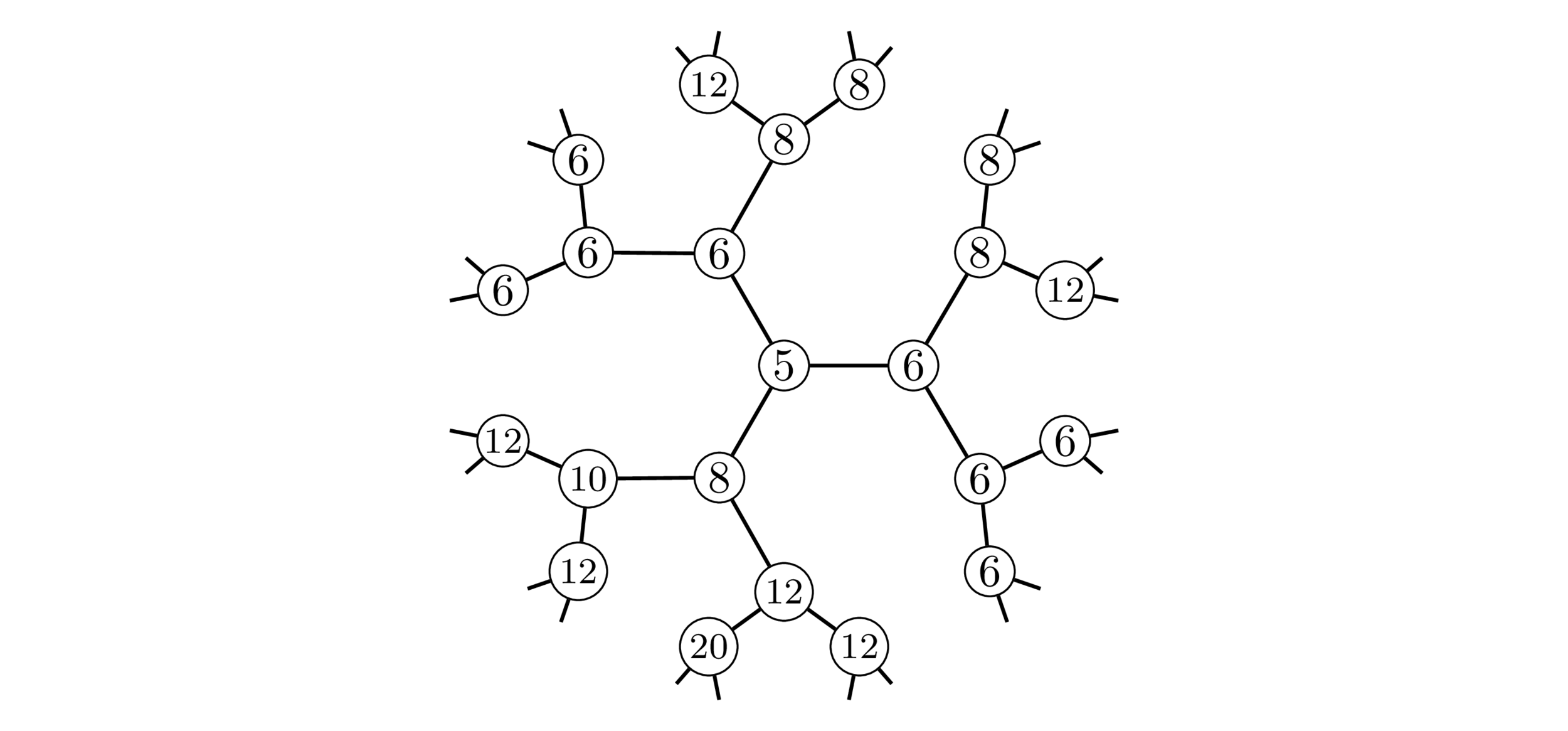
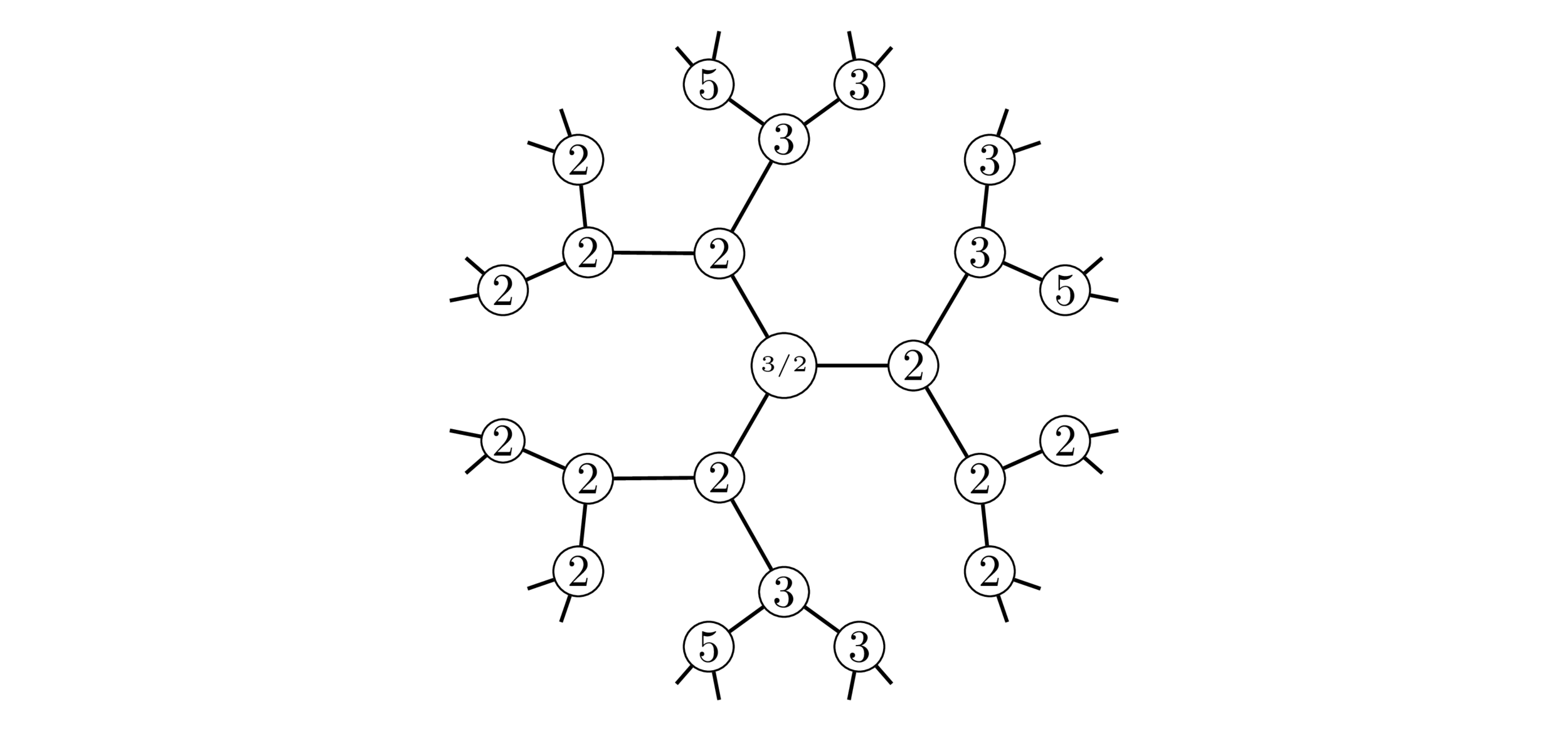

Normalized sums of coefficients
Fix a polytope \(P\), with \(\mathscr{E}_{n,\ell}(P)\neq 0\). Define
where \(\Lambda\supseteq\mathbf{Z}^n\) runs over all lattices in \(\mathbf{Q}^n\) with \(\#(\Lambda/\mathbf{Z}^n)=m\).
Just as a lattice generated from a matrix from \(\mathrm{GL}_n(\mathbf{Q})\cap\mathrm{Mat}_n(\mathbf{Z})\),
a symplectic lattice is generated from one in \(\mathrm{GSp}_{2n}(\mathbf{Q})\cap\mathrm{Mat}_{2n}(\mathbf{Z})\).
Define \(\mathcal{C}_{P,\ell}^{\mathsf{C}} : \mathbf{N}\to \mathbf{Q}\) similarly but restricted to symplectic lattices.
We computed \(\mathcal{C}_{P,1}^{\mathsf{A}}(2)\) and \(\mathcal{C}_{P,1}^{\mathsf{A}}(4)\).
An arithmetic function
Write \(\mathsf{X}\) for either \(\mathsf{A}\) or \(\mathsf{C}\).
Theorem (Alfes, M, & Voll (2025)).
(Independence) For polytopes \(P\) and \(Q\), with \(\dim P=\dim Q\),
(Multiplicativity) For \(a,b\in \mathbf{N}\) with \(\mathrm{gcd}(a,b)=1\),
Growth rate of coefficients
For functions \(f,g : \mathbb{R}\to \mathbb{R}\), we write
Proposition (Alfes, M, & Voll (2025)).
Let \(\ell\in \{0,1,\dots, n\}\). Assuming \(\mathscr{E}_{n,\ell}(P)\neq 0\),
Here, \(\zeta\) is the Riemann zeta function.
Averaging over all lattices
Corollary.
Let \(P\) be an \(n\)-dimensional polytope in \(\mathbf{Z}^n\) and \(\ell\in \{0,1,\dots, n-2\}\). The average \(\ell\)th Ehrhart coefficient of \(P\), running over all \(\Lambda\supseteq\mathbf{Z}^n\) in \(\mathbf{Q}^n\) with finite co-index, approaches
Example. For \(n=3\), the average linear coefficient approaches
Example. For \(n=4\), the average quadratic coefficient approaches
Growth rate (symplectic edition)
Theorem (Alfes, M, & Voll (2025)).
For each \(\ell\in \{0,1,\dots, 2n\}\) there exists \(c_{n,\ell}\in\mathbb{R}\) such that
For \(i,j\in\mathbb{N}_0\), write \(\delta_{i,j}\) for the Kronecker delta symbol.
For \(n=2\) (i.e. in \(4\) dimensions) we completely know \(c_{2,\ell}\):
Averaging over symplectic lattices
When \(n=2\) and \(\ell=1\), the average linear coefficient is
Corollary.
Let \(P\) be \(2n\)-dimensional in \(\mathbf{Z}^{2n}\). The average \(\ell\)th Ehrhart coefficient, running over all symplectic lattices, converges only when \(\ell\in\{0,1,\dots, n-1\}\). Its limit is
Modular form analogue
Previous theorems stem from the understanding extracted from the Hecke operators.
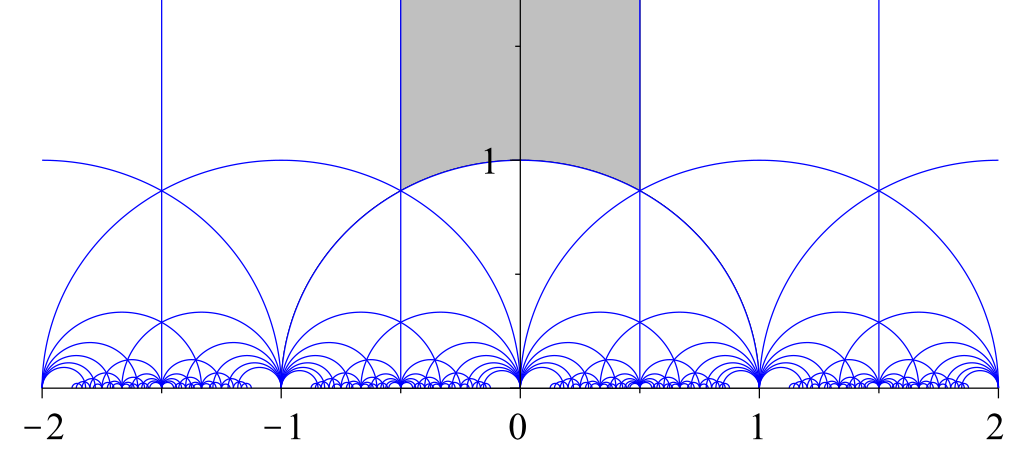

Points in \(\mathrm{SL}_2(\mathbf{Z})\setminus \mathbf{H}\)
\(\mathrm{GL}_n(\mathbf{Z})\setminus\{\text{Polytopes}\}\)
Modular form weight \(k\)
\(\mathscr{E}_{n,k}\)
The (symplectic) Hecke ring \(\mathcal{H}\) is the set of functions \(G^+ \to \mathbf{Z}\) that:
- are continuous (thus, locally constant),
- have compact support,
- are constant on \(\Gamma\)-double cosets.
\(\mathbf{Z}\)-basis for \(\mathcal{H}\) : characteristic functions on \(\Gamma\)-double cosets.
We define matrices \(D_0,\dots, D_n\in G^+\): for \(k\in \{1,\dots, n\}\),
Let \(T_k\in\mathcal{H}\) be the characteristic function on \(\Gamma D_k\Gamma\). Thus,
(symplectic)
elemtary
divisors
For \(f\in\mathrm{UIV}_{2n}\), define \(Tf\in\mathrm{UIV}_{2n}\) via
where
\(\Gamma\setminus \Gamma g \Gamma\) : set of lattices with prescribed elementary divisors,
Extend linearly to define an action of \(\mathcal{H}\) on \(\mathrm{UIV}_{2n}\).
Let \(T\in\mathcal{H}\) be the characteristic function for \(\Gamma g\Gamma\), so associated with some elementary divisors.
What does this action look like on our generators \(T_k\)?
\(h\cdot P\) : given by some integer matrix in \(\Gamma h\) acting on vertices.
Each matrix corresponds to a \(\Gamma\)-left coset.
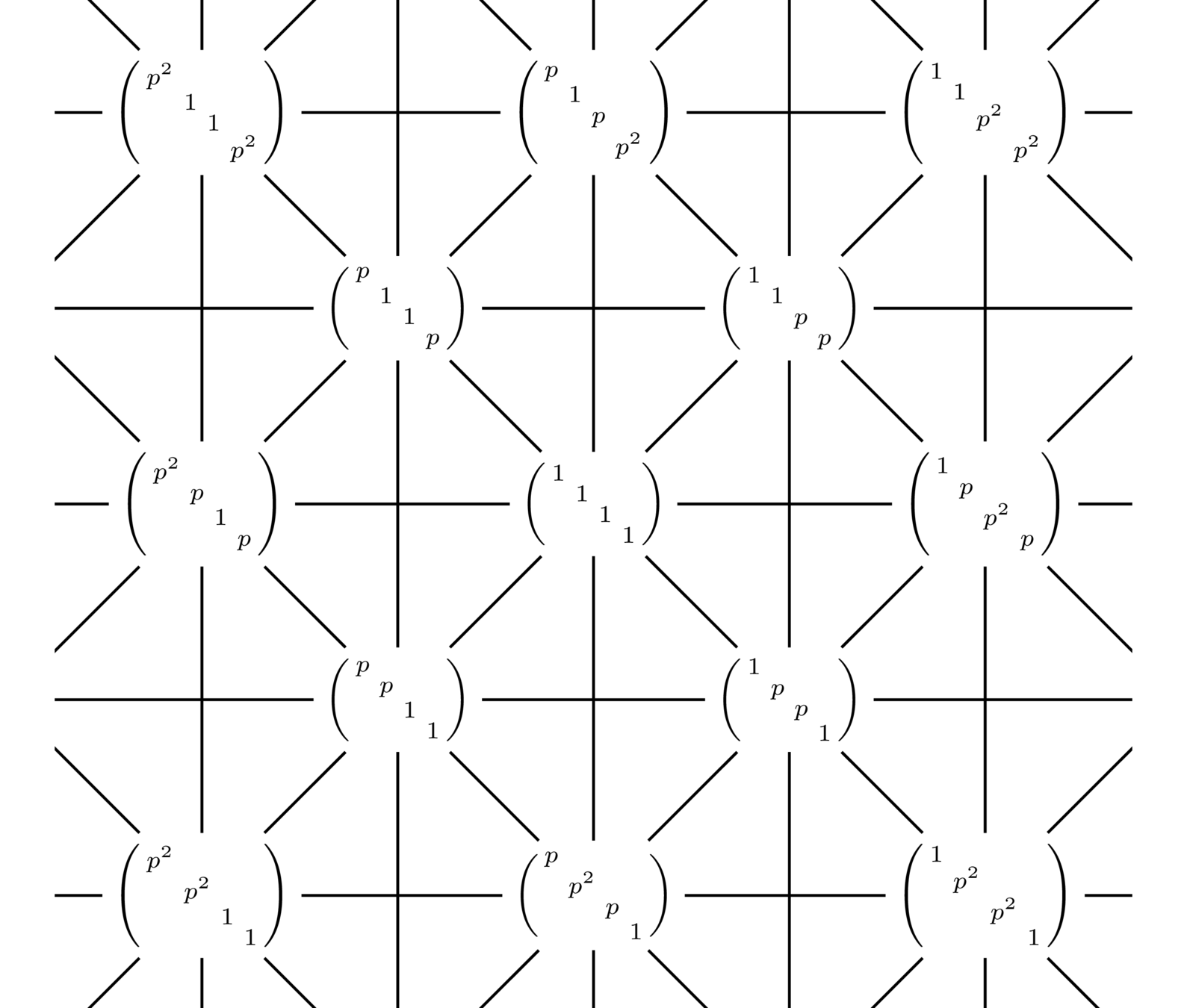
Colors correspond to \(\Gamma\)-double cosets.
Knowing that the \(\mathscr{E}_{2n,\ell}\) form a symplectic Hecke eigenbasis means we can take advantage of the theory of spherical functions.
Leads to a nice interpretation of the associated zeta function:
Ehrhart–Hecke zeta functions
Lattice
from \(\Gamma g\)
To understand growth of \(\mathcal{C}_{P,\ell}^{\mathsf{X}}\), need to understand \(\mathcal{Z}_{n,\ell,p}^{\mathsf{X}}\) for all \(p\):
Main method of proof: lattice enumeration from M & Voll (2024).
Type A case is simpler. We know the global zeta function:
Theorem (Alfes, M, & Voll (2025)).
Setting \(t = p^{-s}\),
Type C case is more subtle. We know the local zeta function:
Summary
The \(\mathscr{E}_{2n,\ell}\) form a symplectic Hecke eigenbasis of \(\mathrm{UIV}_{2n}\).
Theory of spherical functions on \(p\)-adic groups provide tools to study growth of coefficients.
Thank you!
- Unique* valuations with this property
- is \(\zeta(n-\ell)/\zeta(n)\) for \(\ell\in\{0,\dots, n-2\}\) over all lattices,
The average \(\ell\)th coefficient of the Ehrhart polynomial...
- converges for \(\ell\in \{0,\dots, \frac{2n}{2} - 1\}\) over sympletic lattices.
